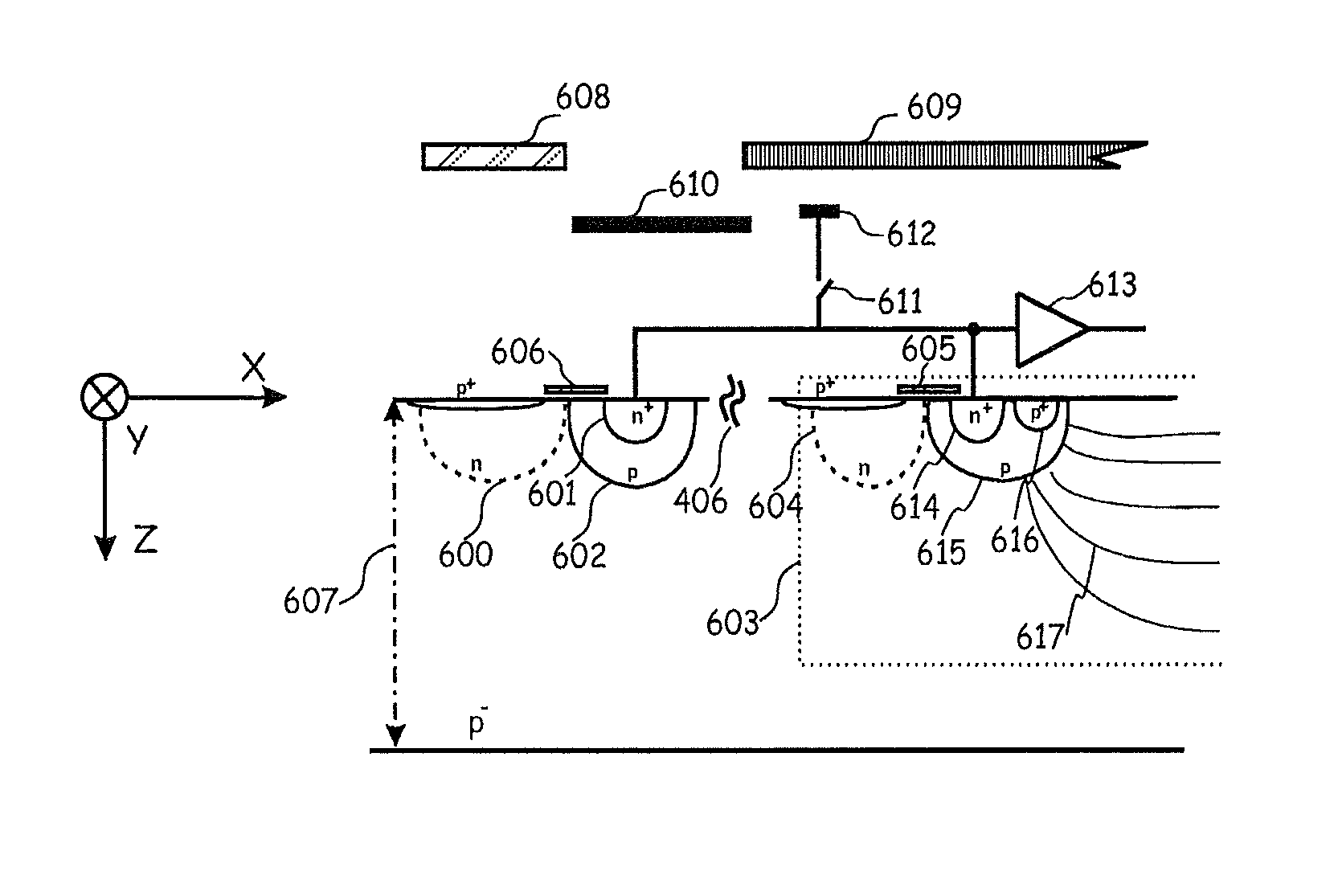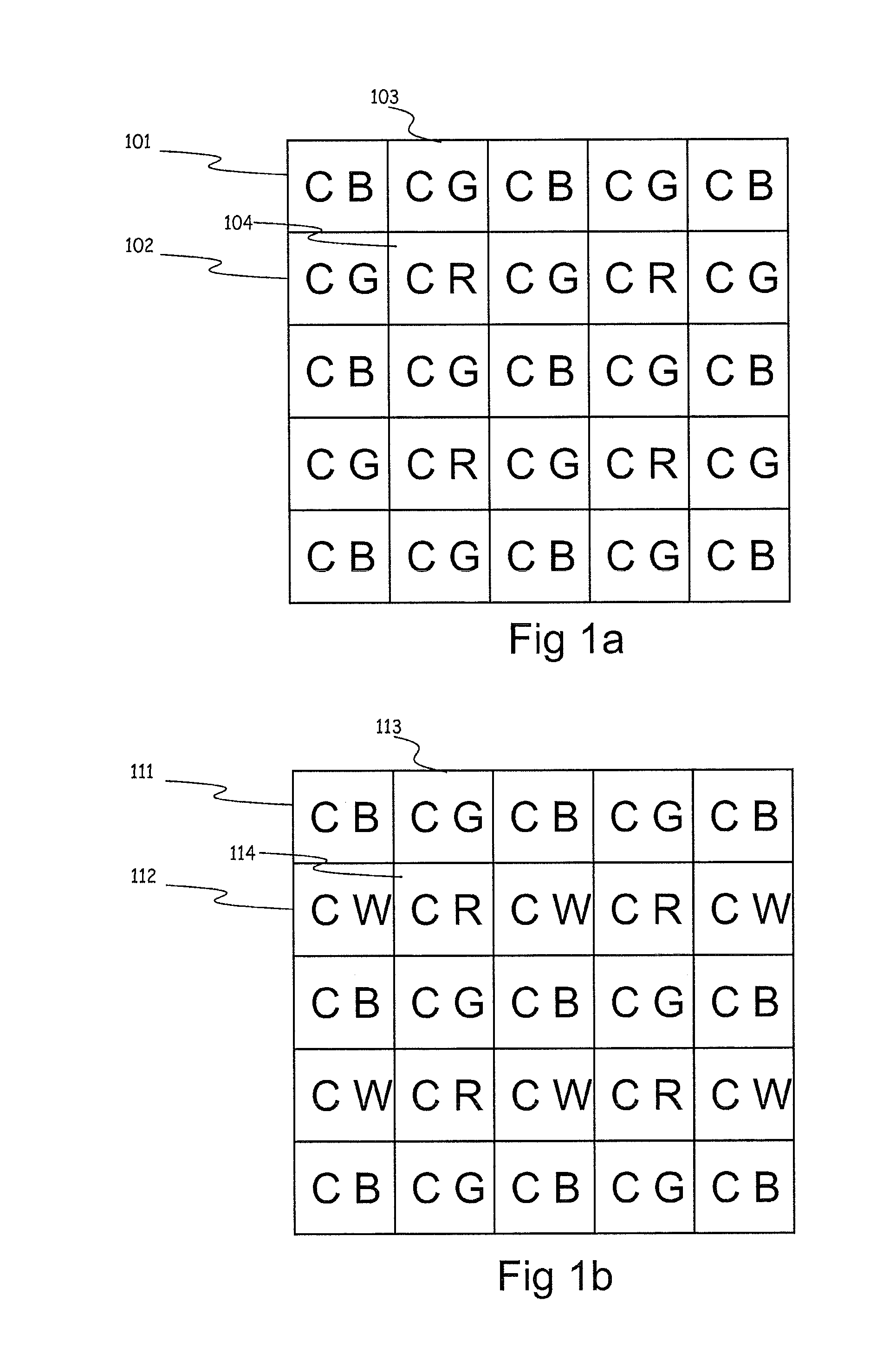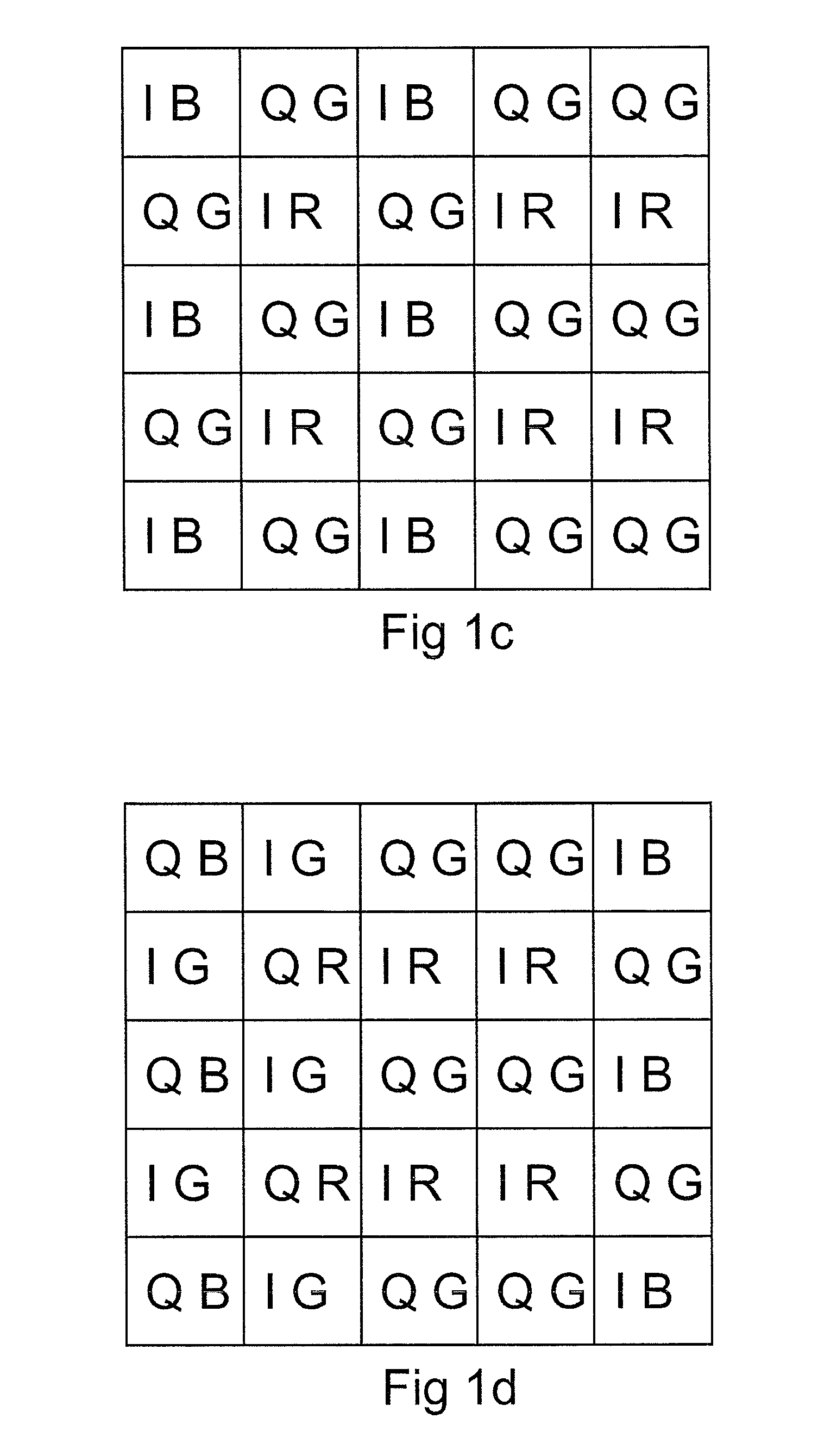Multispectral sensor
a multi-spectral sensor and sensor technology, applied in the field of multi-spectral sensors, can solve problems such as registration errors
- Summary
- Abstract
- Description
- Claims
- Application Information
AI Technical Summary
Benefits of technology
Problems solved by technology
Method used
Image
Examples
first embodiment
[0102]FIG. 1a shows the invention. The figure illustrates a pattern of pixels whereby individual pixels 101, 102, 103, 104 are capable of acquiring a non visible light, e.g. IR component which is at least 1 a correlation component (Ci) to reconstruct depth (Z) and at acquiring at least 1 color component. The non visible light, e.g. IR component can also provide a distance dependent factor such as a reflectance value of reflected non visible light, e.g. IR light from the object being viewed. Other distance dependent factors can be a speckle pattern, or a pattern that is actively projected onto the object. The distance dependent factor can be used to generate a confidence level. The color component can be for example R(ed), G(reen), B(lue), W(hite), etc. The color-pattern can be implemented according to state-of-the art patterns such as Bayer, RGBW, etc. Each pixel can be used to reconstruct depth and color offering the advantage of near-perfect registration. Pixels in an array do not...
second embodiment
[0103]FIG. 1b shows the inventions where pixels are capable of acquiring at least 1 correlation component to reconstruct depth and at least 1 color component R(ed), G(reen), B(lue) or W(hite).
[0104]A number of methods can be listed to reconstruct depth using spatially distributed, temporally distributed or spatially and temporally distributed correlation components. A pixel depth (Z) can be obtained using a single pixel and a single acquisition. Each pixel thus measures in a single optical acquisition (or exposure) all correlation components needed for a depth reconstruction.
[0105]Or the pixel depth (Z) can be obtained using 2 or more pixels and a single acquisition, each pixel measuring a correlation component necessary for the depth reconstruction. Each pixel thus measures at least 1 correlation component and may interpolates the missing correlation components using neighboring pixels. Methods for checking the consistency of the correlation components can be used to avoid combinin...
third embodiment
[0110]FIG. 3 shows the invention.
[0111]In the described embodiments of the present invention a CAPD is chosen as demodulation pixel, but the implementation can be independent of the demodulating device.
[0112]In FIG. 3 a Current-assisted photonic demodulator is shown whereby an electric field 307 is induced in a substrate 308 by a majority carrier current flowing between substrate terminals 301 and 302 or, in other words, first and second contact elements 301 and 302 (or vice versa). The substrate between the terminals 301 and 302 forms a first area sensitive to electromagnetic radiation, i.e. incident electromagnetic radiation, such as light for example, generates carriers in the substrate. The wavelength of the radiation that is effective in generation, e.g. speed of operation, depends upon the material of the substrate used as well as other factors such as temperature. Alongside substrate contacts or contact elements 301, 302 is a first and second detector 303, 304 respectively in...
PUM
 Login to View More
Login to View More Abstract
Description
Claims
Application Information
 Login to View More
Login to View More - R&D
- Intellectual Property
- Life Sciences
- Materials
- Tech Scout
- Unparalleled Data Quality
- Higher Quality Content
- 60% Fewer Hallucinations
Browse by: Latest US Patents, China's latest patents, Technical Efficacy Thesaurus, Application Domain, Technology Topic, Popular Technical Reports.
© 2025 PatSnap. All rights reserved.Legal|Privacy policy|Modern Slavery Act Transparency Statement|Sitemap|About US| Contact US: help@patsnap.com



